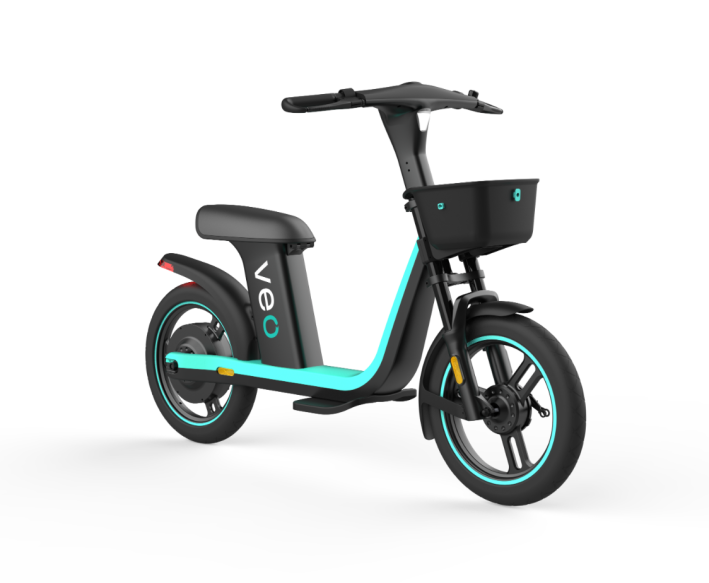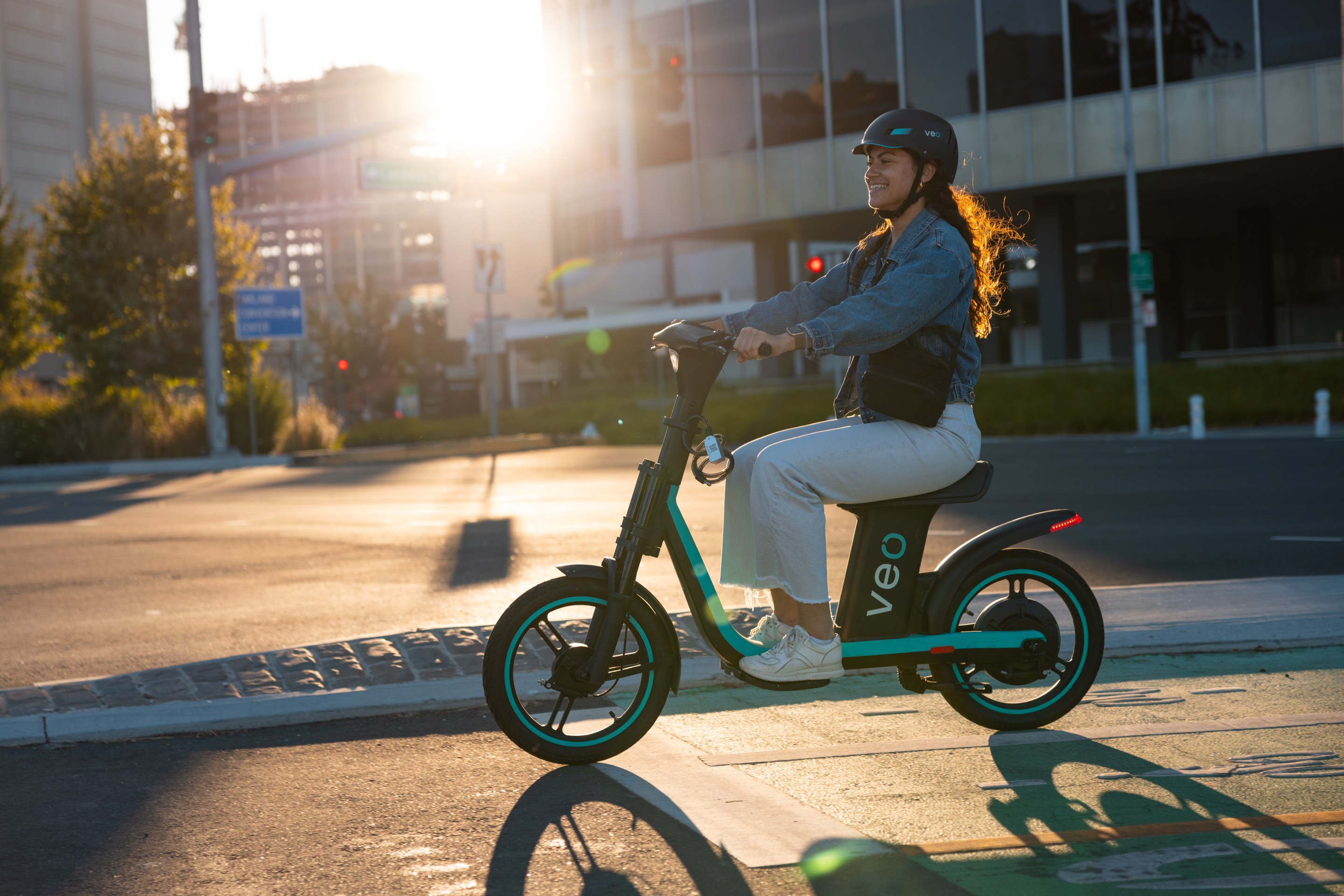
Bloomington, Indiana is pioneering a new approach to micromobility: by this summer, 25 percent of each operator’s micromobility fleet must consist of sit-down scooters or e-bikes. Operators that surpass this requirement with 50 percent or more seated vehicles will get a discount on City fees. As part of updated rules passed this month, the City will lift its nighttime riding curfew for seated vehicles only.
Why the big focus on seated vehicles? According to a City staff presentation to the Bloomington Board of Public Works, seated vehicles may attract new riders, enable longer trips, and provide safety benefits.
Data on millions of rides from Veo markets across North America supports Bloomington’s move for a few key reasons:
- Attracting new riders. While young males tend to be overrepresented in micromobility ridership, there is great potential to bring new riders into the fold through actions like adding protected bike lanes. Veo user research indicates that prioritizing certain vehicle types could help diversify ridership further.Veo’s latest market-wide survey of nearly 10,000 riders found that throttle-powered, seated vehicles are favored by older riders, women, and people with disabilities. Many of these traditionally underrepresented riders prefer seated vehicles because they provide a greater sense of comfort and don’t require the need to stand or pedal – which is great if you prefer a more balanced ride or are dressed up for work. Riders also report that these vehicles provide transportation access while they are managing sprained ankles, knee and hip injuries, and other mobility challenges.
- Enabling longer trips. In order for micromobility to replace more car trips, riders need to feel comfortable traveling longer distances. Seated vehicles are key to achieving this goal: Veo ridership data indicates that seated vehicles are preferred for longer trips, with rides typically lasting one mile longer on seated vehicles than standing scooters. Seated vehicles are especially helpful for traveling greater distances at night, when bus service is less frequent or in some cases not operating at all.
- Improving safety. Veo trips on both standing and seated vehicles are extremely safe, with approximately 99.99 percent of all trips completed without incident nationally. Additionally, in line with safety studies from major urban markets like Oakland, CA, the vast majority of micromobility crashes that result in injuries involve another mode of transportation — i.e. a for-hire or private car. This is why we must continue to promote seated and standing scooters as sustainable means of transportation as cities install more protected bike lanes to enhance rider safety.
- While micromobility’s track record over the past five years shows that scooter and bike trips are overwhelmingly safe, data indicates that vehicle type can also affect safety: Veo seated vehicles experience 62 percent fewer crashes than standing scooters. This was not surprising to us, given that riders report that our seated scooter’s large tires and lower center of gravity provides a greater sense of balance and control, especially for new riders who are unaccustomed to stand-up scooters. Riders also report finding the large tires beneficial for navigating common road conditions like potholes, rocks, and uneven surfaces.
More research is needed on the benefits of seated vehicles

There is limited third-party research on how vehicle type affects rider experience. Further exploration of this topic could generate important learnings about how vehicle type affects ridership demographics, trip length, and safety. It’s also important for policymakers and researchers to note that not all seated vehicles are the same. For example, a seated scooter with large tires, a large frame, and a lower center of gravity is going to provide a much different riding experience than a “seated scooter" that has been assembled by welding a bike seat onto the body of a standing scooter. Similarly, a class 1 e-bike, which requires riders to pedal, may provide a different level of access than a class 2 throttle-assist e-bike where pedaling is optional.
Building a safe, accessible micromobility future for all
With our industry still in its infancy, the actions we take today will determine our ability to realize the benefits of micromobility at scale. One action cities can take now to grow ridership is to follow Bloomington’s lead by mandating seated vehicles. With thoughtful deployment of seated vehicles, we can advance the industry as we ensure safe, car-free transportation access for all.
Alex Keating is Head of Policy and Partnerships at Veo, the micromobility company on a mission to end car dependency by making clean transportation accessible to all. Alex formerly served as Director of Special Projects at the New York City Department of Transportation.
Opinion submissions do not necessarily reflect the views of Streetsblog USA.






